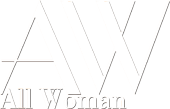Shopping for best uniform prices
Remember when your mother used to buy your uniform material and give it out to a dressmaker so that by September your new outfit was ready?
Well things have changed a lot since then and the new trend is to get the uniforms ready made by factories such as the Uniform Centre in Kingston. Our question this week was however which one works out cheaper?
The responses varied when we spoke to several parents.
“I bought the material on sale from about three weeks ago at Joseph’s downtown. The plaid that my daughter’s school wants cost about $70 per yard. After that I have to order it made,” said Rachael Mingoes, a young mother who went the traditional route of giving it out to a dressmaker but would rather a more convenient method. “If the price is good and the uniforms fit well, for sure I would buy it from the factory or even the dressmakers, who make them and sell.”
Mingoes is not excited by the prospect of making new uniforms but since her daughter changed schools for the new school year, she has been preparing for the inevitable. Last term, when her child attended August Town Primary, she went downtown and bought from one of the dressmakers who made that particular school uniform for sale. “It was cheaper (uniform and blouse for $450) and sometimes they are made better,” she quipped.
Finding a good dressmaker to make the uniforms at an affordable price can be a daunting process for parents.
Some like Mingoes are up to the challenge and go that route even though at times there are complaints about garments not ready on time and poor workmanship.
Other parents embrace the new method of outfitting their children wherein they just purchase the required school dress straight off the peg.
This scene plays out at Booth 104 in the Constant Spring Arcade, Half-Way-Tree, where khaki suits in many sizes can be seen hanging from the tiny space. From $250 for a size 4 shirt to $550 for the larger size 14, boyswear for school is readily available. The pants are sold separately, starting at $300 for a 20-inches length and goes up to 32 inches for $600.
But which offers better price with a quality product?
One dressmaker in the corporate area, Christine Thompson of Chrissie’s Corner, says her price ranges vary depending on the type and style of the apparel that she is hired to make. For instance, a tunic with blouse, inclusive of zipper, buttons, buckles and belting goes from $550-$600.
“I look forward to the bulk from July to August. People start coming in around those times to get their children’s uniforms custom-made. Most of the preparatory and high schools are the ones most noted for contracting factories to do the job but on the other hand basic schools and some non-traditional institutions allow parents to seek dressmakers,” said Thompson, whose shop along Red Hills Road, is overwhelmed with orders. Her small workroom boasts many uniforms from the dark blue of Dunoon Technical to the lighter shade of Ardenne High.
Despite the volume of her work, however, Thompson is quick to admit that the factories are making a significant dent in the work of dressmakers.
One of the reasons for this is that they offer competitive prices.
According to Gregory Khan, proprietor of Uniform Centre in Kingston, his policy for determining the price of any uniform depends on the size, style and volume of order.
“I have about 14 schools working with at the moment and the price differs. For argument’s sake, Wolmers is different from John Mills,” he said.
But at Everwear Garments, a factory that also makes schoolwear prices depend on the institution. For example, uniform for Immaculate Conception High school in Kingston is about $980 ($600 for the skirt and $380 for the blouse) while for Queen’s High School it is $600 for the tunic and $300 for the white blouse. They charge $600 to $1000 for khaki pants and $700 for the blue shirt with crest that makes up the Jamaica College uniform.
At the same time, Paulette Rhoden, spokesperson for the Apparel Industry, an arm of the Jamaica Manufacturers’ Association, said that uniforms are produced in bulk from manufacturers. From as early as April, she said, white blouses and khakis were being made and stockpiled for distribution in September.
“Actually it is cheaper to buy from the factories. Some parents want their daughters to look like beauty queens to go to school and will get a dressmaker to nip here and tuck there. Meanwhile, the factories are given a set regulation; say to cut six inches from the neck or the knee. Sizes would be available most times in small, medium, large or extra large and that’s it,” she said.
She argued that parents, however, should not be compelled to buy from the schools and some amount of freedom of choice should be exercised.
“Some parents are not able to pay school fees so how can they be bound to buy from these establishments. This is the time of year where the small seamstresses make a bit of money,” she said.


